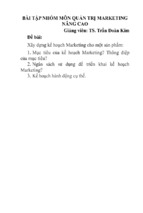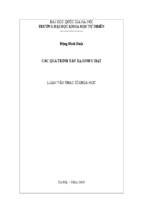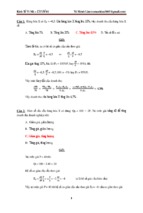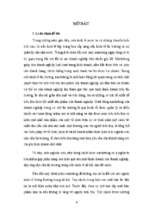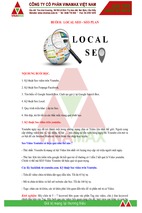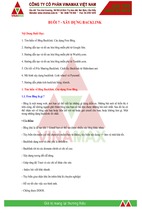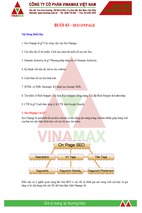The Handbook of Hybrid Securities
For other titles in the Wiley Finance series
please see www.wiley.com/finance
The Handbook of Hybrid Securities
Convertible Bonds, CoCo Bonds, and Bail-In
Jan De Spiegeleer
Wim Schoutens
Cynthia Van Hulle
This edition first published 2014
© 2014 Jan De Spiegeleer, Wim Schoutens and Cynthia Van Hulle
Registered office
John Wiley & Sons Ltd, The Atrium, Southern Gate, Chichester, West Sussex, PO19 8SQ, United Kingdom
For details of our global editorial offices, for customer services and for information about how to apply for
permission to reuse the copyright material in this book please see our website at www.wiley.com.
All rights reserved. No part of this publication may be reproduced, stored in a retrieval system, or transmitted, in any
form or by any means, electronic, mechanical, photocopying, recording or otherwise, except as permitted by the UK
Copyright, Designs and Patents Act 1988, without the prior permission of the publisher.
Wiley publishes in a variety of print and electronic formats and by print-on-demand. Some material included with
standard print versions of this book may not be included in e-books or in print-on-demand. If this book refers to
media such as a CD or DVD that is not included in the version you purchased, you may download this material at
http://booksupport.wiley.com. For more information about Wiley products, visit www.wiley.com.
Designations used by companies to distinguish their products are often claimed as trademarks. All brand names and
product names used in this book are trade names, service marks, trademarks or registered trademarks of their
respective owners. The publisher is not associated with any product or vendor mentioned in this book.
Limit of Liability/Disclaimer of Warranty: While the publisher and author have used their best efforts in preparing
this book, they make no representations or warranties with the respect to the accuracy or completeness of the
contents of this book and specifically disclaim any implied warranties of merchantability or fitness for a particular
purpose. It is sold on the understanding that the publisher is not engaged in rendering professional services and
neither the publisher nor the author shall be liable for damages arising herefrom. If professional advice or other
expert assistance is required, the services of a competent professional should be sought.
Library of Congress Cataloging-in-Publication Data
Spiegeleer, Jan de.
The handbook of hybrid securities : convertible bonds, coco bonds, and bail-in / Jan De Spiegeleer,
Wim Schoutens, Cynthia Van Hulle.
pages cm—(The Wiley finance series)
Includes bibliographical references and index.
ISBN 978-1-118-44999-8 (hardback)
1. Convertible securities—Handbooks, manuals, etc. 2. Convertible bonds—Handbooks, manuals, etc.
I. Schoutens, Wim. II. Van Hulle, Cynthia, III. Title.
HG4652.S67 2014
332.63′ 2044—dc23
2013046701
A catalogue record for this book is available from the British Library.
ISBN 978-1-118-44999-8 (hardback)
ISBN 978-1-118-45002-4 (ebk)
ISBN 978-1-118-45000-0 (ebk)
ISBN 978-1-118-86265-0 (obk)
Cover image: Shutterstock.com
Set in 10/12pt Times by Aptara, Inc., New Delhi, India
Printed in Great Britain by CPI Group (UK) Ltd, Croydon, CR0 4YY
To Klaartje, Charlotte, Pieter-Jan and Willem
Jan
To Ethel, Jente and Maitzanne
Wim
To my mother
Cynthia
Contents
Reading this Book
xv
Acknowledgments
xvii
1 Hybrid Assets
1.1 Introduction
1.2 Hybrid Capital
1.3 Preferreds
1.4 Convertible Bonds
1.5 Contingent Convertibles
1.6 Other Types of Hybrid Debt
1.6.1 Hybrid Bank Capital
1.6.2 Hybrid Corporate Capital
1.6.3 Toggle Bonds
1.7 Regulation
1.7.1 Making Failures Less Likely
1.7.2 Making Failures Less Disruptive
1.8 Bail-In Capital
1.9 Risk and Rating
1.9.1 Risk
1.9.2 Rating
1.10 Conclusion
1
1
1
3
5
7
7
7
13
14
15
15
15
16
17
17
18
18
2
19
19
22
22
22
23
25
27
27
33
Convertible Bonds
2.1 Introduction
2.2 Anatomy of a Convertible Bond
2.2.1 Final Payoff
2.2.2 Price Graph
2.2.3 Quotation of a Convertible Bond
2.2.4 Bond Floor (𝐵𝐹 )
2.2.5 Parity
2.2.6 Convexity
2.2.7 Optional Conversion
viii
Contents
2.2.8 Forced Conversion
2.2.9 Mandatory Conversion
Convertible Bond Arbitrage
2.3.1 Components of Risk
2.3.2 Delta
2.3.3 Delta Hedging
2.3.4 Different Notions of Delta
2.3.5 Greeks
Standard Features
2.4.1 Issuer Call
2.4.2 Put
2.4.3 Coupons
2.4.4 Dividends
Additional Features
2.5.1 Dividend Protection
2.5.2 Take-Over Protection
2.5.3 Refixes
Other Convertible Bond Types
2.6.1 Exchangeables
2.6.2 Synthetic Convertibles
2.6.3 Cross-Currency Convertibles
2.6.4 Reverse Convertibles
2.6.5 Convertible Preferreds
2.6.6 Make-Whole
2.6.7 Contingent Conversion
2.6.8 Convertible Bond Option
Convertible Bond Terminology
2.7.1 144A
2.7.2 Fixed-Income Metrics
Convertible Bond Market
2.8.1 Market Participants
2.8.2 Investors
Conclusion
35
35
37
37
42
45
45
46
47
47
50
53
56
58
58
59
60
62
62
63
64
66
67
67
67
68
68
68
68
73
73
74
76
Contingent Convertibles (CoCos)
3.1 Introduction
3.2 Definition
3.3 Anatomy
3.3.1 Loss-Absorption Mechanism
3.3.2 Trigger
3.3.3 Host Instrument
3.4 CoCos and Convertible Bonds
3.4.1 Forced vs. Optional Conversion
3.4.2 Negative vs. Positive Convexity
3.4.3 Limited vs. Unlimited Upside
3.4.4 Similarity to Reverse Convertibles
77
77
78
79
79
83
86
87
87
88
89
89
2.3
2.4
2.5
2.6
2.7
2.8
2.9
3
Contents
ix
3.5 CoCos and Regulations
3.5.1 Introduction
3.5.2 Basel Framework
3.5.3 Basel I
3.5.4 Basel II
3.5.5 Basel III
3.5.6 CoCos in Basel III
3.5.7 High and Low-Trigger CoCos
3.6 Ranking in the Balance Sheet
3.7 Alternative Structures
3.8 Contingent Capital: Pro and Contra
3.8.1 Advantages
3.8.2 Disadvantages
3.8.3 Conclusion
89
89
90
91
92
93
101
104
106
106
107
107
107
110
4
Corporate Hybrids
4.1 Introduction
4.2 Issuer of Hybrid Debt
4.3 Investing in Hybrid Debt
4.4 Structure of a Corporate Hybrid Bond
4.4.1 Coupons
4.4.2 Replacement Capital Covenant
4.4.3 Issuer Calls
4.5 View of Rating Agencies
4.6 Risk in Hybrid Bonds
4.6.1 Subordination Risk
4.6.2 Deferral Risk
4.6.3 Extension Risk
4.7 Convexity in Hybrid Bonds
4.7.1 Case Study: Henkel 5.375% 2104
4.7.2 Duration Dynamics
4.8 Equity Character of Hybrid Bonds
113
113
113
114
115
115
118
119
121
122
122
122
122
122
122
126
126
5
Bail-In Bonds
5.1 Introduction
5.2 Definition
5.3 Resolution Regime
5.3.1 Resolution Tools
5.3.2 Timetable
5.4 Case Studies
5.4.1 Bail-In of Senior Bonds
5.4.2 Saving Lehman Brothers
5.5 Consequences of Bail-In
5.5.1 Higher Funding Costs
5.5.2 Higher GDP
127
127
128
129
130
130
133
133
134
136
136
136
x
Contents
5.5.3 Availability of Bail-In Bonds
5.5.4 Paying Bankers in Bail-In Bonds
5.6 Conclusion
136
136
137
6
Modeling Hybrids: An Introduction
6.1 Introduction
6.2 Heuristic Approaches
6.2.1 Corporate Hybrids: Yield of a Callable Bond
6.2.2 Convertible Bonds: Break Even
6.3 Building Models
6.3.1 Introduction
6.3.2 Martingales
6.3.3 Model Map
6.3.4 Cheapness
6.4 How Many Factors?
6.5 Sensitivity Analysis
6.5.1 Introduction
6.5.2 Non-linear Model
139
139
140
140
142
143
143
145
146
147
149
152
152
153
7
Modeling Hybrids: Stochastic Processes
7.1 Introduction
7.2 Probability Density Functions
7.2.1 Introduction
7.2.2 Normal Distribution
7.2.3 Lognormal Distribution
7.2.4 Exponential Distribution
7.2.5 Poisson Distribution
7.3 Brownian Motion
7.4 Ito Process
7.4.1 Introduction
7.4.2 Ito’s Lemma
7.4.3 Share Prices as Geometric Brownian Motion
7.5 Poisson Process
7.5.1 Definition
7.5.2 Advanced Poisson Processes
7.5.3 Conclusion
159
159
159
159
160
161
162
163
164
165
165
166
169
172
172
174
176
8
Modeling Hybrids: Risk Neutrality
8.1 Introduction
8.2 Closed-Form Solution
8.2.1 Introduction
8.2.2 Black–Scholes Solution
8.2.3 Solving the Black–Scholes Equation
8.2.4 Case Study: Reverse Convertible
8.3 Tree-Based Methods
8.3.1 Introduction
8.3.2 Framework
177
177
180
180
182
183
184
186
186
187
Contents
xi
8.3.3 Geometry of the Trinomial Tree
8.3.4 Modeling Share Prices on a Trinomial Tree
8.3.5 European Options on a Trinomial Tree
8.3.6 American Options
8.3.7 Bermudan Options: Imposing a Particular Time Slice
Finite Difference Technique
Monte Carlo
8.5.1 Introduction
8.5.2 Generating Random Numbers
189
193
199
200
203
204
205
205
206
9 Modeling Hybrids: Advanced Issues
9.1 Tail Risk in Hybrids
9.2 Jump Diffusion
9.2.1 Introduction
9.2.2 Share Price Process with Jump to Default
9.2.3 Trinomial Trees with Jump to Default
9.2.4 Pricing Convertible Bonds with Jump Diffusion
9.2.5 Lost in Translation
9.3 Correlation
9.3.1 Correlation Risk in Hybrids
9.3.2 Definition
9.3.3 Correlating Wiener Processes
9.3.4 Cholesky Factorization
9.3.5 Cholesky Example
9.3.6 Correlating Events
9.3.7 Using Equity Correlation
9.3.8 Case Study: Correlated Defaults
9.3.9 Case Study: Asset Correlation vs. Default Correlation
9.4 Structural Models
9.5 Conclusion
211
211
212
212
214
217
221
226
227
227
228
229
230
233
234
235
237
238
240
242
8.4
8.5
10
Modeling Hybrids: Handling Credit
10.1 Credit Spread
10.1.1 Definition
10.1.2 Working with Credit Spreads
10.1.3 Option-Adjusted Spread
10.2 Default Intensity
10.2.1 Introduction
10.3 Credit Default Swaps
10.3.1 Definition
10.3.2 Example of a CDS Curve
10.3.3 Availability of CDS Data
10.3.4 Premium and Credit Leg
10.3.5 Valuation
10.3.6 Rule of Thumb
10.3.7 Market Convention
10.3.8 Case Study: Implied Default Probability
243
243
243
244
246
246
246
248
248
250
250
251
252
255
256
257
xii
Contents
10.4 Credit Triangle
10.4.1 Definition
10.4.2 Case Study
10.4.3 The Big Picture
10.5 Stochastic Credit
259
259
260
263
263
11
Constant Elasticity of Variance
11.1 From Black–Scholes to CEV
11.1.1 Introduction
11.1.2 Leverage Effect
11.1.3 Link with Black–Scholes
11.2 Historical Parameter Estimation
11.3 Valuation: Analytical Solution
11.3.1 Moving Away from Black–Scholes
11.3.2 Semi-Closed-Form Formula
11.3.3 Numerical Example
11.4 Valuation: Trinomial Trees for CEV
11.4.1 American Options
11.4.2 Trinomial Trees for CEV
11.4.3 Numerical Example
11.5 Jump-Extended CEV Process
11.5.1 Introduction
11.5.2 JDCEV-Generated Skew
11.5.3 Convertible Bonds Priced under JDCEV
11.6 Case Study: Pricing Mandatories with CEV
11.6.1 Mandatory Conversion
11.6.2 Numerical Example
11.7 Case Study: Pricing Convertibles with a Reset
11.7.1 Refixing the Conversion Price
11.7.2 Involvement of CEV
11.7.3 Numerical Example
11.8 Calibration of CEV
11.8.1 Introduction
11.8.2 Local or Global Calibration
11.8.3 Calibrating CEV: Step by Step
267
267
267
268
269
270
274
274
275
276
277
277
277
279
283
283
284
284
286
286
287
288
288
291
292
295
295
296
296
12
Pricing Contingent Debt
12.1 Introduction
12.2 Credit Derivatives Method
12.2.1 Introduction
12.2.2 Loss
12.2.3 Trigger Intensity (𝜆Trigger )
12.2.4 CoCo Spread Calculation Example
12.2.5 Case Study: Lloyds Contingent Convertibles
12.3 Equity Derivatives Method
12.3.1 Introduction
12.3.2 Step 1: Zero-Coupon CoCo
301
301
302
302
302
303
305
305
307
307
308
Contents
13
xiii
12.3.3 Step 2: Adding Coupons
12.3.4 Numerical Example
12.3.5 Case Study: Lloyds Contingent Convertibles
12.3.6 Case Study: Tier 1 and Tier 2 CoCos
12.4 Coupon Deferral
12.5 Using Lattice Models
12.6 Linking Credit to Equity
12.6.1 Introduction
12.6.2 Hedging Credit Through Equity
12.6.3 Credit Elasticity
12.7 CoCos with Upside: CoCoCo
12.7.1 Downside Balanced with Upside
12.7.2 Numerical Example
12.8 Adding Stochastic Credit
12.8.1 Two-Factor Model
12.8.2 Monte Carlo Method
12.8.3 Pricing CoCos in a Two-Factor Model
12.8.4 Case Study
12.9 Avoiding Death Spirals
12.10 Appendix: Pricing Contingent Debt on a Trinomial Tree
12.10.1 Generalized Procedure
12.10.2 Positioning Nodes on the Trigger
12.10.3 Solving the CoCo Price
309
311
313
316
317
321
323
323
326
326
329
329
330
333
333
335
337
338
339
341
341
343
345
Multi-Factor Models for Hybrids
13.1 Introduction
13.2 Early Exercise
13.3 American Monte Carlo
13.3.1 Longstaff and Schwartz (LS) Technique
13.3.2 Convergence
13.3.3 Example: Longstaff and Schwartz (LS) Step by Step
13.3.4 Adding Calls and Puts
13.4 Multi-Factor Models
13.4.1 Adding Stochastic Interest Rates
13.4.2 Equity–Interest Rate Correlation
13.4.3 Adapting Longstaff and Schwartz (LS)
13.4.4 Convertible Bond under Stochastic Interest Rates
13.4.5 Adding Investor Put
13.5 Conclusion
347
347
348
352
352
356
356
362
364
364
365
366
367
371
371
References
373
Index
381
Reading this Book
The target audience for this work on hybrid securities is very broad. The absolute beginner
will find in it a sufficient course to become familiar with this asset class. More advanced users
working in areas such as trading, portfolio, or risk management will be introduced in detail
to the latest advances in numerical techniques to value and hedge these instruments. Hybrid
financial instruments combine properties of both shares and corporate bonds into one, but
mastering their price dynamics is far from a walk in the park. Blending the properties of two
easy-to-understand asset classes such as equity and bonds into a hybrid does not leave us with
an instrument having straightforward properties. Hybrids are therefore often misunderstood
and mis-sold: what for some looks like an equity instrument with bond-like risk could turn
out to deliver a bond-like return with equity volatility. The reality is hence very different from
the perceived risk and results in an asset that can have multiple sources of risk: market risk,
default risk, different levels of equity and interest rate convexity, etc. In the case of contingent
convertibles, the newest category in hybrid debt, there are phenomena such as the “death
spiral” that deserve our attention. These are situations where a forced conversion of a bond
into shares would trigger a wave of sell orders on the underlying share. This book devotes
different chapters to CoCo bonds, including the newly developed pricing models, taking into
account different features of these special instruments.
Preferreds or preference shares are on first sight the easiest member of the hybrid family
to be understood and fully mastered. The reality is far different, and many investors dealing
with this instrument that looks like a bond were confronted with equity-like volatility. This
became very clear in the spring of 2008, when US banks chose to strengthen their balance
sheet massively through the issuance of preferreds. Traders, portfolio managers, and even
retail investors loaded up on these instruments and had to deal with a complete implosion of
their portfolio in the heat of the credit crunch. This destructive process was speeded up by the
default of Lehman Brothers.
Mastering hybrids is not constrained to financial calculus only. Proposals and regulations
such as, for example, Basel III and the Dodd–Frank Act dramatically changed the financial
landscape from 2010 onwards. Some hybrid securities are not going to be allowed anymore
as regulatory capital. National regulators are now putting the emphasis on instruments that
in principle have the capacity to be really loss absorbing through their design. This is where
contingent convertibles started to play an important role in 2010. Regulation has clearly been
driving innovation and regulators became financial engineers! This is not a book on financial
regulation, but it nevertheless covers the big overhauls that reshaped the financial landscape.
xvi
Reading this Book
A handbook can never be of any value to a practitioner if there is no mention at all of what the
regulatory implications of each of the different instruments are.
The quantitative part of this book is very pragmatic. The first steps into the landscape of
hybrid instruments will take place in a perfect Black–Scholes world. Later on, when using, for
example, constant elasticity of variance, the stochastic processes simulating the share price
movements become more look-alikes of the real world. Subsequently, we link the default
probability of an issuer of hybrid debt to its share price level. In a final step, hybrids are priced
as derivative instruments with multiple sources of risk: equity, interest rate, and credit. This
multi-factor approach deals with the exact nature of hybrid instruments, where several state
variables are at work. The valuation model turns into a blend of debt and equity. The more
advanced quantitative audience, consisting of arbitrageurs, portfolio managers, or quantitative
analysts, will be introduced to methods such as the American Monte Carlo simulation. All
of these techniques are mainstream methods in exotic equity derivative pricing but have not
made their landing on the hybrid desks yet. As many numerical examples as possible have
been added to enrich this book.
www.allonhybrids.com
On our webpage, www.allonhybrids.com, the interested reader can find more examples and
reading material as a supplement to this book. The characteristics of most contingent convertible bonds are provided as well. For each of the CoCo bonds the pricing model is embedded
in a spreadsheet that is available for download.
Acknowledgments
This book is the work of its authors but without the support of our colleagues, people we met on
seminars, and the referees of the papers we published, all of this would not have been possible.
We would like to thank explicitly Professor Luc Keuleneer (KPMG), Professor Stefan Poedts
(KU Leuven), Professor Theo Vermaelen (INSEAD), Professor Jan Dhaene (KU Leuven),
Professor Dilip Madan (University of Maryland), and Professor Jose Manuel Corcuera (Universitat de Barcelona) for their support. Our gratitude goes to Philippe Jabre, Julien-Dumas
Pilhou, Romain Cosandey, James Cleary, Jan-Hinnerk Richter, Henry Hale, Philipe Riachi,
and Mark Cecil from Jabre Capital Partners (Geneva) for their guidance and advice. Many
thanks to Francesca Campolongo, Jessica Cariboni, Francesca Di Girolamo, and Henrik
Jonsson from the Joint Research Centre (European Commission), Wim Allegaert (KBC)
and Stan Maes (DG Internal Market and Financial Services at the European Commission).
We thank David Cox and the staff at London Financial Studies. From Assenagon Asset
Management we remember our productive cooperation with Vassilios Pappas, Michael Hunseler, Robert Edwin Van Kleeck, and Stephan Hoecht. Our gratitude and respect also go to
Marc Colman, Carole Bernard, and Andrea Mosconi from Bloomberg for the enthusiasm and
professionalism with which they embrace the asset class of convertible bonds.
- Xem thêm -

